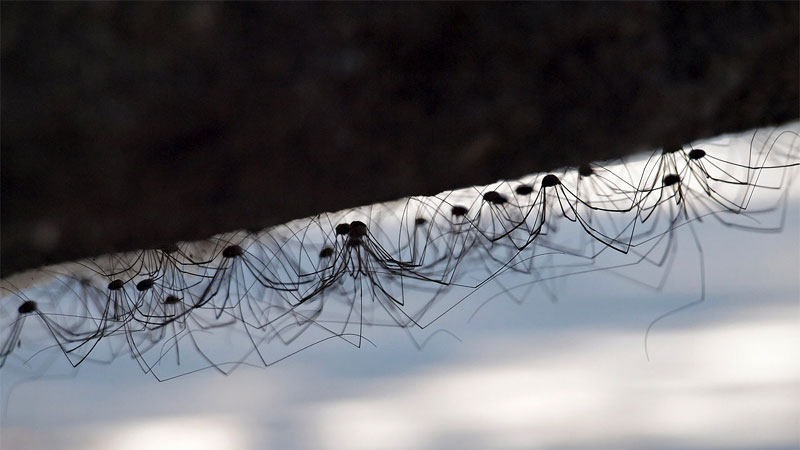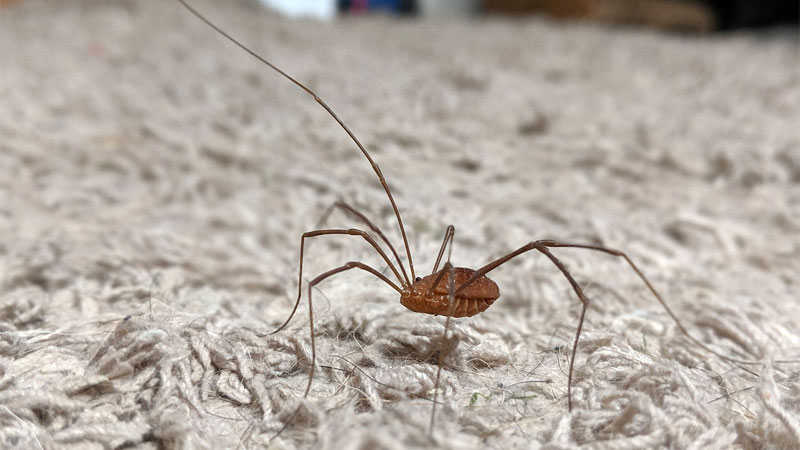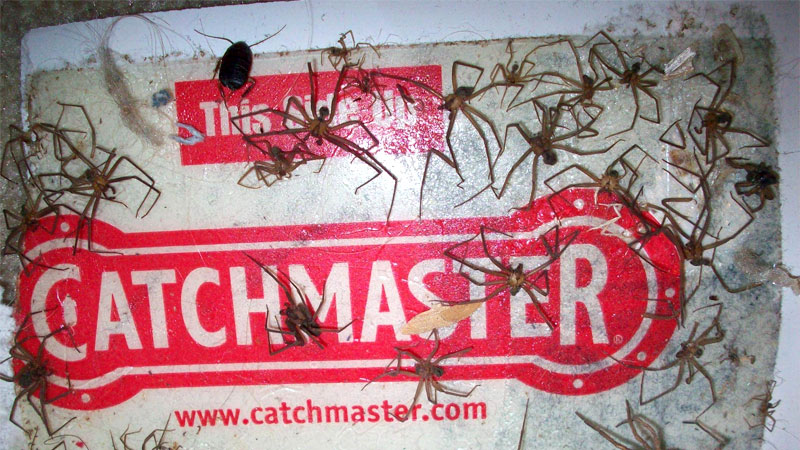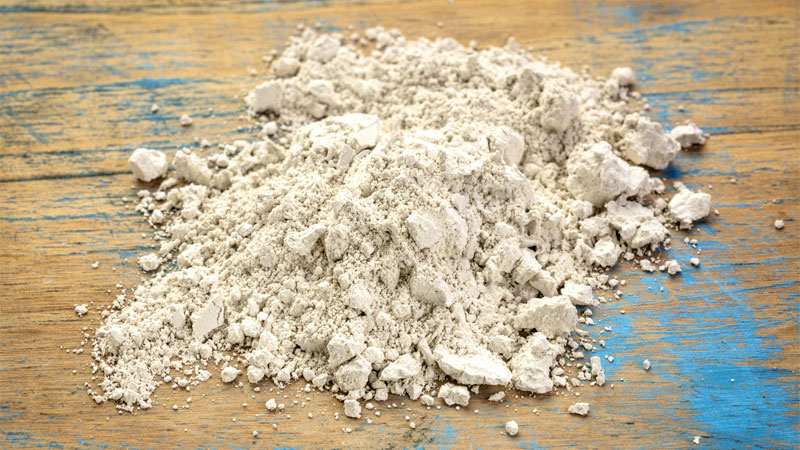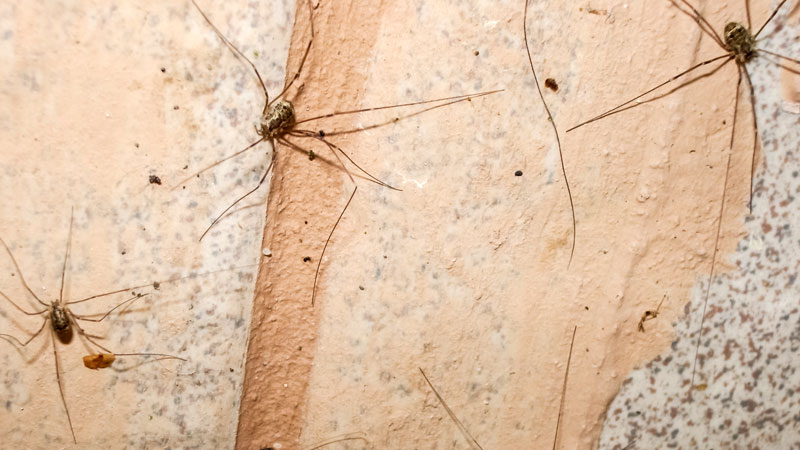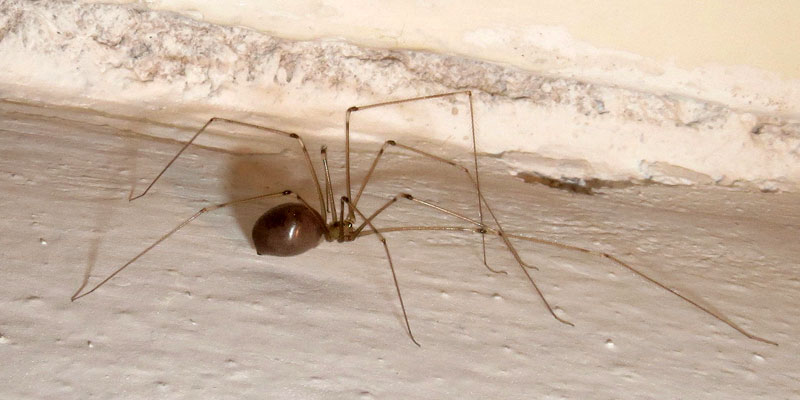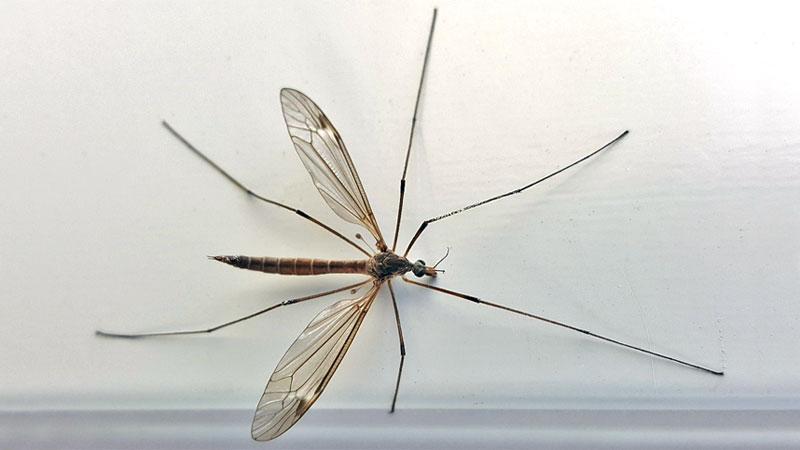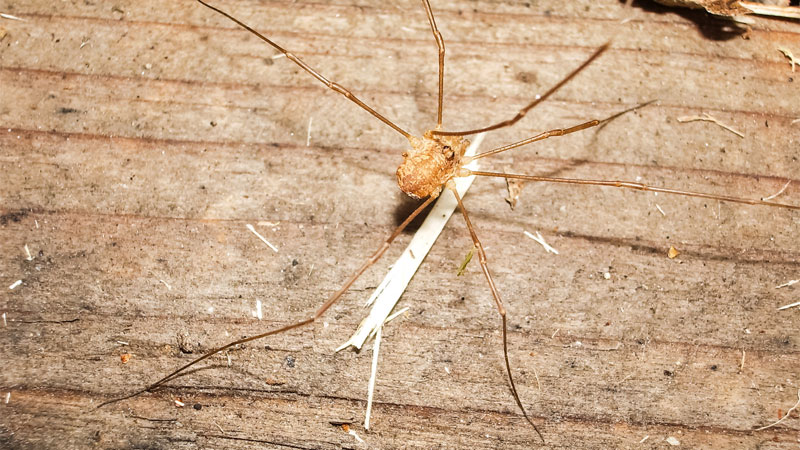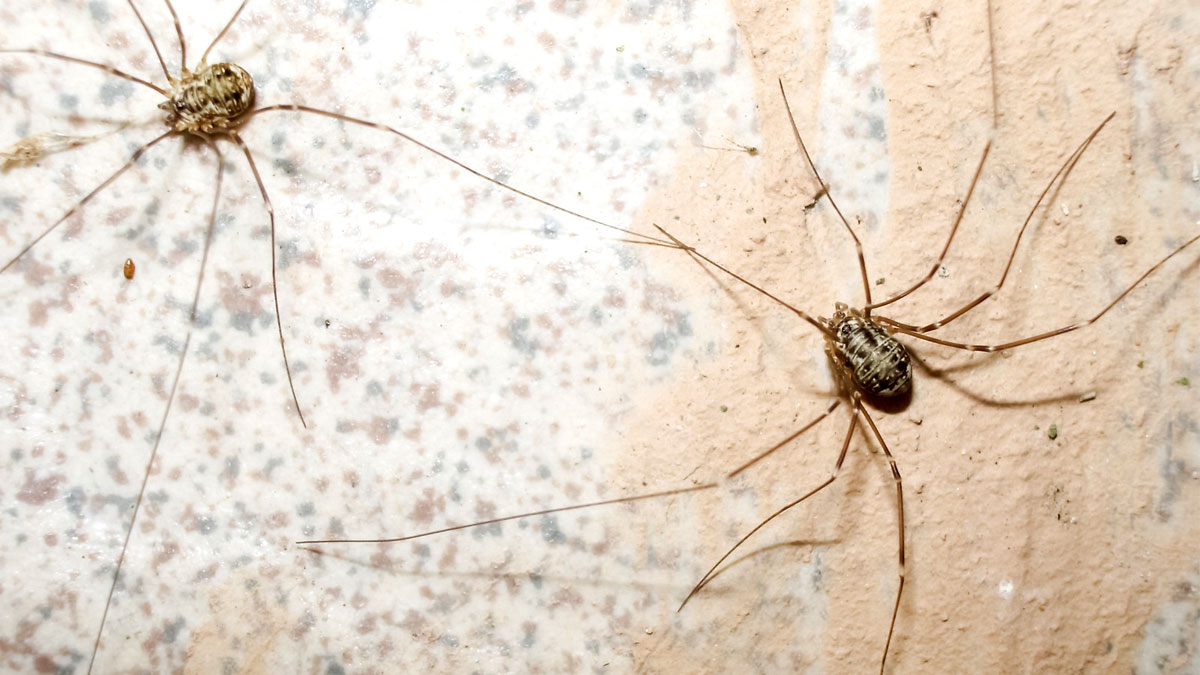Today, we’re going to be looking at the terrifying topic of daddy long legs, dispelling some myths, and revealing some surprising facts. We’ll begin by covering some quick and easy ways to eliminate daddy long legs in the event you really don’t want these creepy critters hanging around your home.
Be warned, there are actually several critters by this name, and we’ll be looking at all of them in our Getting to Know section. In the end, we’ll not only discuss how to keep these critters away, but also some reasons you may not want to get rid of them in the first place.
Getting Rid of Daddy Long Legs
So now we’re at that portion of the discussion where we normally look at a critter and tell you how to remove it from your home, but we’re talking about three completely different critters here. We’ve already covered crane flies in detail here, so that just leaves harvestmen and cellar spiders.
Well the good news is that you can get rid of these remaining two using the same methods. As they’re both arachnids, they have many similarities that can be exploited, even though they’re very different critters.
In the event you don’t want to keep these little critters around, here are several methods that can help eliminate daddy long-legs from your home or other buildings on your property.
Acaricides
Acaricides are pesticides that target arachnids. They’re different from insecticides in composition, but application is generally the same. There are a wide range of acaricides out there, many of which also work on insects. Miss Muffet’s Revenge and Terro Spider Killer are two popular products.
Be sure to check the label to ensure your will work on harvestmen or cellar spiders before buying. Also, as these are pesticides, be sure to keep them away from children and pets.
- Kills spiders and creates a barrier inside and outside the home to keep them...
- Attached sprayer for quick and easy application with a spray range of up to 10...
- Treat all areas were spiders are found, spray until wet but not soaking and for...
Sticky Traps
Ahh, yes, the ever useful sticky trap was bound to make an appearance here. Of all the trap types out there, sticky traps (like Catchmaster and Trapper MAX) tend to have the biggest success rate and perhaps the lowest cost.
They’re also generally non-toxic, although you certainly don’t want to leave them where kids or pets can get hold of them (unless you want a VERY sticky mess, that is!).
To use a sticky trap, simply place it where you’ve seen a lot of daddy long legs activity. When the spider or harvestman attempts to walk over it, they’ll become stuck and will become more entangled the more they struggle.
Of course, the trick is to get them to actually step on the glue trap, which isn’t always easy. However, with a little patience, these traps are really hard to beat.
- Great non-toxic way of catching rodents and insects.
- The glue covered surface measures 4.5"X 6.5" (The whole trap is 5.25"X 7.75")
- Can be used as flat or folded and placed where rodent or other target pests...
Diatomaceous Earth (aka: DE)
This remains one of our favorite options for getting rid of a wide range of pests, and it works on daddy long legs as well. Diatomaceous earth powder is actually the crushed fossils of diatom shells, which are microscopic organisms.
The food-grade version is harmless to humans and pets (although you probably still don’t want to breathe it in) and deadly to tiny pests such as insects and arachnids.
To use, simply sprinkle the DE where you see daddy long-legs frequently. When they step on the dust, its sharp edges will lacerate their legs, scraping away the protective coating on their exoskeleton and causing them to dehydrate to death.
There are only two real drawbacks to this method. First, it will need to be reapplied every few days, and especially if it gets wet. Second, it only works if the critters actually come in contact with it, so you may need a little patience.
Placing it in corners, around doors, and other spaces you commonly see spiders set up shop can increase the chances of success. Just be sure to avoid using this product in damp environments such as cellars where the moisture will render it useless.
- Natural Product - Composed of 2lbs of pure ground freshwater diatomaceous earth...
- OMRI Listed - Listed with the Organic Minerals Research Institute, a non-profit...
- Supports a Great Cause - Harris donates 10% of profits to support the local...
Does Bleach Kill Daddy Long Legs?
Yes, bleach can be quite effecting. However, you will need to use a little caution because its corrosive nature is harmful to animals (including humans) and many surfaces. Simply take half a cup of bleach and mix it with water in a spray bottle.
When you see one of these critters, give it a good squirt. The bleach will kill daddy long legs almost instantly upon contact, regardless of the type.
Clean House
This might sound like a no-brainer, but simply keeping your house clean can go a long way when it comes to pest control. However, you’re not actually targeting the daddy long legs by cleaning, you’re targeting their prey.
Clean and thoroughly wash your cabinets and any other nooks and crannies regularly. You can add a bit of essential oil as you wipe them down to leave a pleasant smell that many pests hate.
Check for any signs of leaks or standing water that could attract pests and eliminate the problem. Without prey, both kinds of daddy long legs will often leave on their own. In regards to cellar spiders, clearing away their webs can also encourage them to return to the great outdoors.
Vacuum Them Up
Sometimes the easiest method is to simply suck the critter up. Vacuum cleaners are a fun tool for doing this, although it won’t necessarily kill the daddy long legs. Be sure to dispose of the bag or canister contents safely so the critter can’t escape or empty it outdoors if you’re feeling merciful.
Getting to Know Daddy Long-Legs
In 1955, everyone went to see Fred Astaire as he secretly paid for an orphan’s education, earning the nickname of Daddy Long Legs from the others at the orphanage who’d only seen his shadow.
Unfortunately, that nickname (which can be spelled a multitude of ways) tends to instill anything but warm feelings among homeowners.
In fact, the daddy longlegs is a pest that has a nasty reputation, even though the average person knows very little about them. This is only compounded by all the confusing and often contradictory information out there.
Of course, this has a lot to do with how many different critters share the same nickname, much like the confusion caused by the common nicknames of palmetto bugs and water bugs. However, you might be surprised to find that almost everything you know about daddy longlegs is completely wrong despite the shared nickname.
The Three Daddy Longlegs Problem
As we’ve already mentioned, there are three completely different kinds of critters all bearing the nickname of daddy longlegs, making this quite the difficult issue. So let’s begin by distinguishing between each type and go from there.
Harvestmen
These are the “true” daddy long-legs. They are of the order Opiliones which causes some confusion. While considered arachnids (because of the eight legs), they’re a completely different order from spiders and are more closely related to mites.
As with crane flies, harvestmen get their nickname from their long legs.
Cellar Spiders
Commonly seen in homes, these members of the spider family Pholcidae are often referred to as daddy long legs. These arachnids have long, thin bodies and prey on both insects and other spiders.
Their long legs tend to make them one of the most creepy-looking spiders out there for many people.
Crane Flies
Crane flies are long, skinny flies in the Tipulidae family that resemble oversized mosquitoes. They’re the source of a common phobia, although they’re actually beneficial insects. They earned the nickname of daddy long legs because of their long, spindly legs.
While not as commonly referred to by this nickname as our other two critters, spotting a crane fly from a distance will often lead the observer to not notice the wings and mistake a crane fly for one of our other culprits.
Are Daddy Long Legs Actually Spiders?
Cellar spiders are indeed spiders, but crane flies and harvestmen are not. Obviously, since crane flies are a type of fly, they have only six legs and a body with three sections (head, thorax, abdomen) compared to a spider’s two parts (cephalothorax and abdomen).
But what about harvestmen?
While it’s true that harvestmen are arachnids, they’re only distantly related to spiders. Spiders have a cephalothorax and abdomen, with three to four pairs of eyes. Meanwhile, the harvestman has a fused body and only one pair of eyes.
We can see another striking difference when comparing them to cellar spiders. Harvestmen have very rounded bodies, similar to those of mites. The cellar spider, meanwhile, has a long, thin abdomen that only expands after a meal.
Daddy Long Legs vs Cellar Spider
The idea that daddy long legs and cellar spiders are two different things is usually because the comparison is being made between harvestmen and cellar spiders.
It should be noted that some regions will only refer to one of these by the nickname, while others will refer to both. And, as mentioned earlier, crane flies can also be referred to as daddy longlegs, although this is less common.
Where Do Daddy Long Legs Hide?
Crane flies prefer the great outdoors and are valuable pollinators. However, both harvestmen and cellar spiders share an appreciation for dark, damp places.
You’ll often spot a harvestman out in the garden hunting. They live off of decomposing matter and will occasionally catch live prey. Meanwhile, cellar spiders prefer caves and hollows, where they can hunt insects and even other spiders.
However, both harvestmen and cellar spiders are common home invaders. They will often look for dark and damp places – which our homes have plenty of. It’s common to find both in the basement or garage.
Cellar spiders are a little more likely to venture into kitchens or bathrooms. Meanwhile, harvestmen are more likely to visit the areas under porches and decks.
Can Daddy Long Legs Bite?
Of our three flavors of daddy long-legs, only one is capable of biting people – the cellar spider. Harvestmen have mouthparts designed to grip their prey, not bite into it. Likewise, many species of crane flies lack developed mouthparts, spending their brief adulthood reproducing. But the cellar spider is different.
Cellar spiders have short fangs, but they’re still capable of piercing human flesh. Such bites aren’t common, and often go unnoticed.
Are Daddy Long Legs Poisonous?
Now this is where a common myth comes into play, and the answer is complicated. The myth claims that daddy long legs is the most venomous spider in the world, but its fangs are too small to harm humans.
We’ve already addressed whether or not they’re spiders, as well as whether they can bite. But what about the venom?
Before we can go further, we have to address the difference between venom and poison. A venom is a toxic substance created by an organism and is injected into the victim through a bite or sting. Spiders, such as cellar spiders, are venomous.
Poison, on the other hand, is a substance which is only toxic if ingested or otherwise enters the body by a means other than injection. Harvestmen, when threatened, can spray or coat themselves in a substance that repels potential predators. This substance is poisonous if the harvestman is eaten.
However, this doesn’t mean they’re toxic to humans. Eating a harvestman certainly wouldn’t be pleasant, but there are no cases where doing so led to any toxic effects. And as for cellar spiders, their venom is actually pretty weak compared to other spiders and will only lead to symptoms if you have a severe allergy.
Are Daddy Long Legs Harmful?
Now this is where things really take an interesting turn. All three types of daddy long legs are actually beneficial. Crane flies are pollinators, and their larvae have been known to attack mosquito larvae. They can’t bite people and – outside of their creepy appearance – are completely harmless. Likewise, it’s very rare for them to enter homes.
Harvestmen are likewise completely harmless to humans, although they might potentially pose a problem if your pet bird or lizard tries to eat one. They commonly invade homes, and if you see one, it’s a sign of a different kind of problem.
A harvestmen infestation can signal that you have a leak that’s creating mold. It might also signal an insect infestation, as they’re known to sometimes hunt small bugs.
Cellar spiders can bite humans, but their venom is harmless and will likely only leave a little mark for a day or two. Meanwhile, these are active hunters, so seeing one in your home is a sure sign you have something else living there.
While they target insects, they’re actually also not afraid of more dangerous spider species and will happily hunt down and devour the likes of hobo spiders and black widows. For this reason, if you see them hanging around, it’s a good idea to find out what they’re hunting.
How to Keep Daddy Long Legs Away – And Should You?
It’s pretty clear a daddy long legs infestation is a symptom of other problems. Getting rid of the underlying issue will naturally get rid of the daddy long legs.
But how do you prevent them from invading in the first place? And should you actually welcome these critters into your home or garage?
Preventing Daddy Long Legs
It’s not difficult to keep daddy long legs out of your home. Simply make sure there are no leaky pipes or other potential sources of mold. You’ll also want to locate and seal any potential entry points.
Finally, clean your home regularly and check for signs of potential bug infestations. This includes any indoor plants. Even dead insects around the house can attract predators such as harvestmen and spiders.
Benefits of Daddy Long Legs
While we’ve mostly discussed getting rid of these critters, there are many reasons you may wish to keep them around. Here are a couple major points:
- Even daddy long legs spiders are no threat to humans or most pets. The spiders have weak venom that will only affect something as small as birds or lizards. Harvestmen can coat themselves in a poison that is likewise harmless to all but the smallest of pets when ingested. And crane flies are completely harmless.
- All three types of daddy long legs are predators. Crane fly larvae actively hunt other small larvae, including the occasional mosquito spawn. The other two will hunt live prey throughout their lives. While they won’t stop an active infestation, they can help prevent a new infestation if they catch pests sneaking in.
- Cellar spiders are excellent defenders against more dangerous spiders. If you live in an area where black widow infestations are common, consider letting some cellar spiders.
- Harvestmen are a wonderful indicator of mold or other potential health risks. Instead of hunting them down, take some time to observe their behavior and find out why they’re visiting you in the first place. Once you’ve solved the problem, they’ll simply move on.
- All three types of daddy long legs are valuable allies in garden spaces. They’ll hunt down common plant pests. Crane flies help pollinate the plants, while harvestmen can warn you of a fungal or mold infection before the plant itself shows any symptoms.
- How to Get Rid of Hawks - March 8, 2024
- How to Get Rid of Pill Bugs (Rolly Pollies) - March 1, 2024
- How to Get Rid of Groundhogs (Woodchucks) - February 5, 2024

